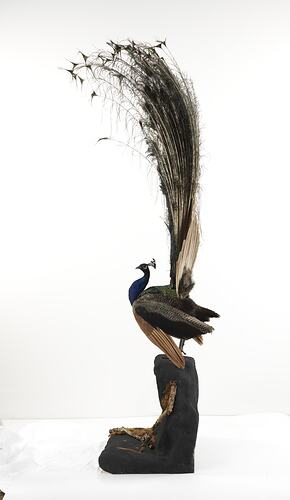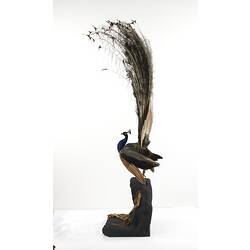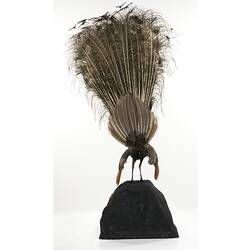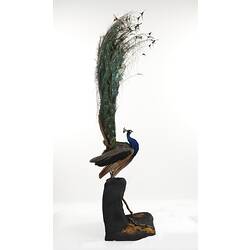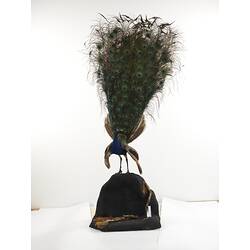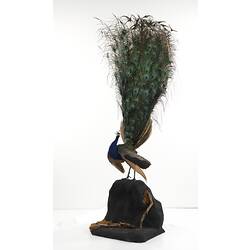Summary
Indian Peafowl have an extremely large natural range, occurring across the Indian sub-continent. They have also been introduced into many countries, including Australia and New Zealand.
This male specimen came from Gujarat in west India.
Adult male peafowl, known as peacocks, are mostly blue and have a dramatic train of long tail feathers and a set of brightly-coloured feathers on their back which they lift and display vertically like a fan. Females, known as peahens, are brown and lack the distinctive feathers of the males.
Charles Darwin (1809-1882) was puzzled by the extreme difference in plumage between peacocks and peahens. The male plumage seemed to contradict his theory of evolution by natural selection as it did not appear to make the male or the species more fit to survive. To explain this, Darwin eventually formulated the concept of sexual selection, in which males compete for attention from females and become showier and more extravagant in appearance or behaviour over successive generations while females remain quite plain. It wasn't until after Darwin's death that this theory was developed further and became an accepted part of evolutionary theory after work done by the biologist Sir Ronald Fisher (1890-1962) and many others.
Indian Peafowl are classified by the International Union for Conservation of Nature (IUCN) as being of Least Concern due to their large populations and wide distribution. However, they are listed in Appendix III of the Convention on International Trade in Endangered Species (CITES) to aid in controlling trade in some areas.
Specimen Details
-
Taxon Name
-
Preferred Common name
Indian Peafowl
-
Number Of Specimens
1
-
Sex
Male
-
Stage Or Age
Adult
-
Specimen Nature
Nature: Mount, Form: Dry
-
Collected By
Unknown
-
Category
-
Scientific Group
-
Discipline
-
Collecting Areas
-
Type of Item
Taxonomy
-
Kingdom
-
Phylum
-
Subphylum
-
Class
-
Subclass
-
Order
-
Family
-
Subfamily
-
Genus
-
Species Name
cristatus
Geospatial Information
-
Country
-
Precise Location
Aboo Hills, Guzerat
